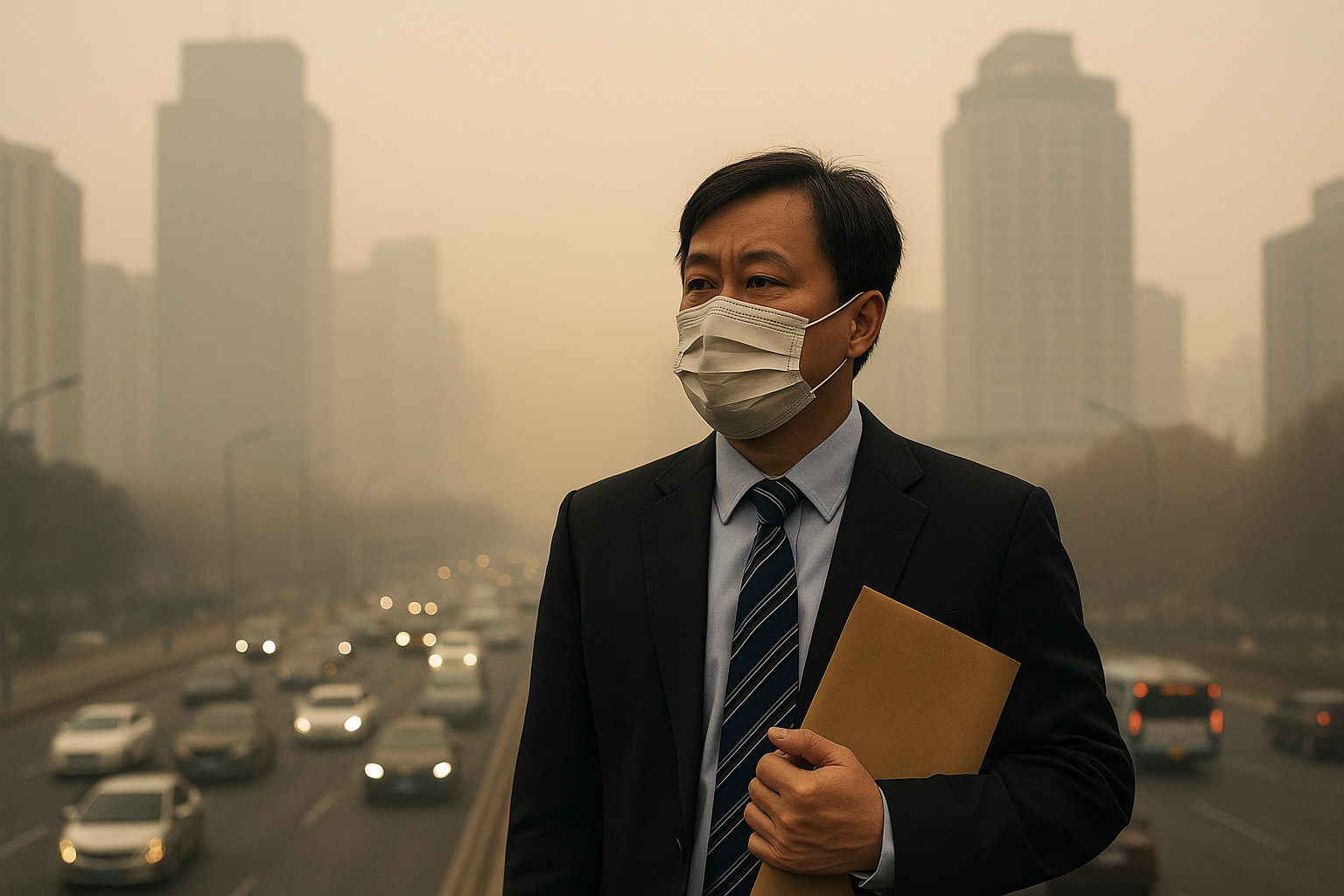Air pollution creates hidden costs for businesses and supply chains
The study identifies a behavioral mechanism through which air pollution indirectly raises credit costs. Poor air quality affects analysts’ sentiment, leading to more conservative and pessimistic credit assessments. This negative bias results in downgraded credit ratings, which in turn tighten lending terms for affected companies.

Air pollution is not only a public health and environmental crisis, it is also raising the cost of doing business, reveals a new study published in Sustainability. The study titled "Air Pollution, Credit Ratings, and Corporate Credit Costs: Evidence from China," shows how deteriorating air quality influences credit rating analysts and drives up borrowing costs for companies.
Based on extensive data from Chinese A-share listed firms between 2007 and 2022, the research uncovers a clear link between environmental factors and corporate financing conditions.
How does air pollution influence corporate credit ratings?
The study identifies a behavioral mechanism through which air pollution indirectly raises credit costs. Poor air quality affects analysts’ sentiment, leading to more conservative and pessimistic credit assessments. This negative bias results in downgraded credit ratings, which in turn tighten lending terms for affected companies.
This effect is not confined to temporary fluctuations. The research highlights that the adverse influence of pollution on ratings persists over time, compounding financial pressure on businesses. The findings emphasize that environmental conditions, traditionally seen as external factors, play a crucial role in shaping financial decisions through the human element of analyst behavior.
The study also points out that analysts’ emotional responses to polluted environments increase rating volatility. This instability makes borrowing more unpredictable and costly for firms, as lenders demand higher interest rates to offset perceived risks. The results underscore the need for financial institutions to account for environmental bias in their assessments to avoid penalizing firms unfairly.
Which companies are most affected by this environmental bias?
The research reveals that the impact of air pollution on credit costs is not uniform across industries and regions. The effects are most severe in high-polluting sectors, manufacturing-heavy industries, and regions with limited banking competition. Companies in these categories face a double burden: they operate in areas with poor air quality while lacking negotiating power with lenders, leaving them vulnerable to higher financing costs.
High-pollution industries are already under increased regulatory scrutiny, and the pessimistic credit evaluations driven by air quality concerns exacerbate their financial challenges. This creates a cycle where pollution indirectly limits access to affordable financing, potentially slowing down investments in cleaner technologies that could improve environmental outcomes.
Regional disparities also play a role. In areas where the banking sector is less competitive, companies have fewer alternatives to offset the effects of negative credit ratings. The lack of competition gives lenders more power to raise borrowing costs, amplifying the economic consequences of pollution-related biases in credit assessments.
These findings suggest that environmental conditions can significantly shape the economic landscape, disproportionately affecting certain industries and regions. They highlight the urgent need for policies that address both environmental quality and financial fairness.
How are xompanies eesponding to rising credit costs?
The study examines how businesses adapt to the financial strain caused by pollution-driven credit cost increases. Firms facing higher borrowing expenses often turn to commercial credit financing as an alternative. This strategy allows them to maintain operations without relying solely on traditional bank loans. However, the increased reliance on commercial credit comes with its own risks, including higher default probabilities and strained supplier relationships.
At the same time, many companies reduce their trade credit supply, tightening payment terms for their customers to protect cash flow. While this move alleviates short-term financial pressure, it can destabilize supply chains, particularly in industries where inter-firm credit plays a critical role.
The research highlights that these reactive strategies may provide temporary relief but fail to address the root causes of rising credit costs. Without interventions to mitigate the environmental and behavioral factors influencing credit ratings, businesses may continue to face escalating financial burdens.
Future directions
The authors recommend several measures to address these challenges:
-
Differentiated credit policies that consider the influence of environmental factors on ratings, preventing pollution-induced biases from unfairly inflating borrowing costs.
-
Improved health protections for analysts to mitigate the emotional effects of working under poor air quality conditions, reducing the likelihood of sentiment-driven rating downgrades.
-
Support mechanisms for industries disproportionately affected by pollution-related financial risks, encouraging investments in cleaner technologies and sustainable practices.
The research also calls for enhanced awareness within the financial sector about how environmental conditions influence analyst behavior. Incorporating environmental and behavioral risk factors into credit evaluation models can create a more balanced and resilient financial system.
- FIRST PUBLISHED IN:
- Devdiscourse










